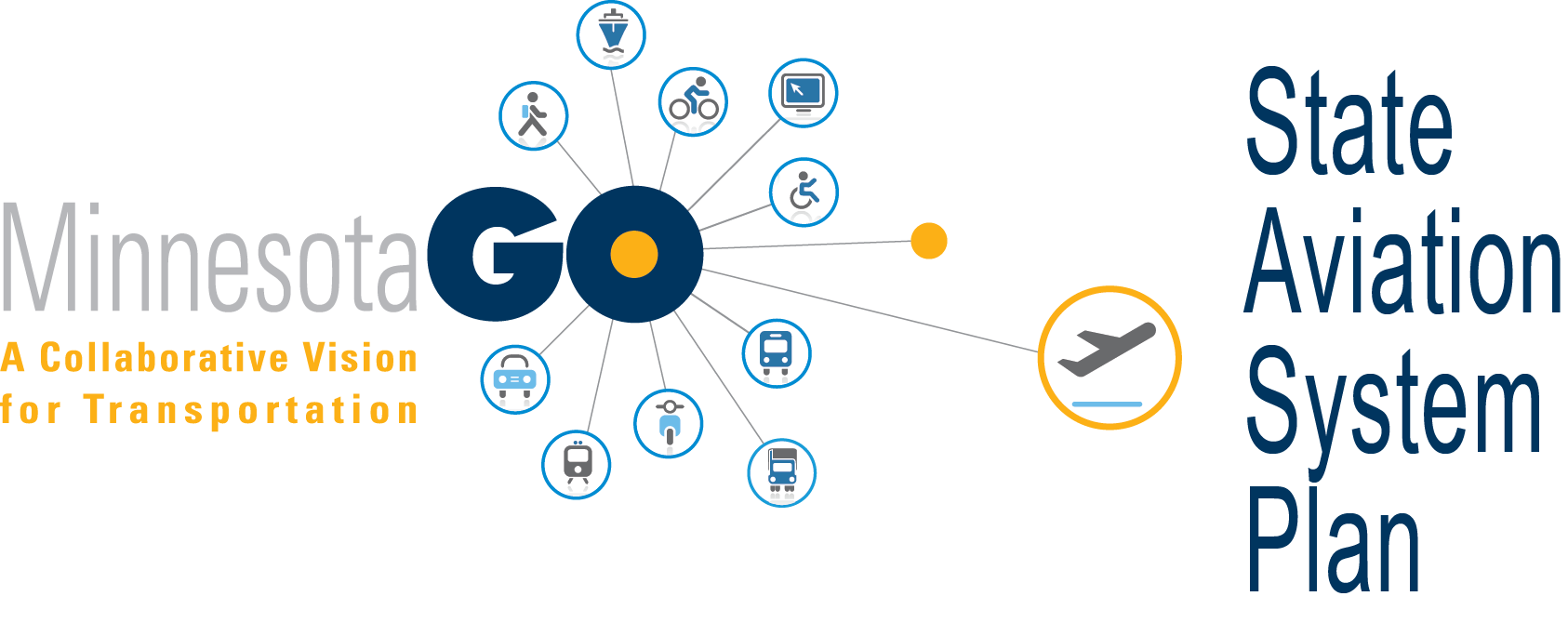State Aviation System Plan (SASP) 2012
The primary objective of the Minnesota State Aviation System Plan is to provide the state with excellent planning tools to assist in making informed decisions guiding the development of Minnesota's system of airports and expending funds in a cost-effective manner. The intent for this plan is that it be accepted and embraced by the Minnesota aviation community, regulatory and funding agencies, the general public, and lawmakers. Toward that end it has been developed in an open, collaborative, and innovative manner with end products that are user-friendly.

SASP Contents
- Commissioner's Letter (PDF, 141 KB)
- Chapter 1 (PDF, 7.61 MB) - Introduction and System Goals
- Chapter 2 (PDF, 3.93 MB) – Inventory
- Chapter 3 (PDF, 7.14 MB) – Forecast
- Chapter 4 (PDF, 2.89 MB) – Airline Service
- Chapter 5 (PDF, 8.77 MB) – Airport Facility Requirements
- Chapter 6 (PDF, 29.98 MB) – Performance Report
- Chapter 7 (PDF, 6.42 MB) – Investment Plan and System Recommendations
- Chapter 8 (PDF, 3.63 MB) – A Future Vision of Aviation
- Appendix A (PDF) – Acronyms
- Appendix B (PDF) – Inventory Survey
- Appendix C (PDF) – Forecast Technical Report
- Appendix D (PDF) – Commercial Air Service Technical Report
- Appendix E – Airport Reports
- Appendix F (PDF) – Unit Cost Assumptions
- Appendix G (PDF) – Goals Matrix
- Comments and Responses (PDF, 81 KB) on the draft SASP from the Public Review period
Minnesota has a long history of system planning for the public airports in the state beginning with the first SASP published in 1970. Major updates have been conducted as necessary every five to seven years considering new social, demographic, economic, and aviation trends. The SASP planning process is based on the Federal Aviation Administration's (FAA) Airport System Planning Process Advisory Circular and the FAA in turn uses the Minnesota SASP to help plan for the needs of the National Airspace System. Here at home, the SASP is also an integral part of the Multimodal Transportation Plan, which is based on ideals from the collaborative Minnesota GO 50 year Vision.

